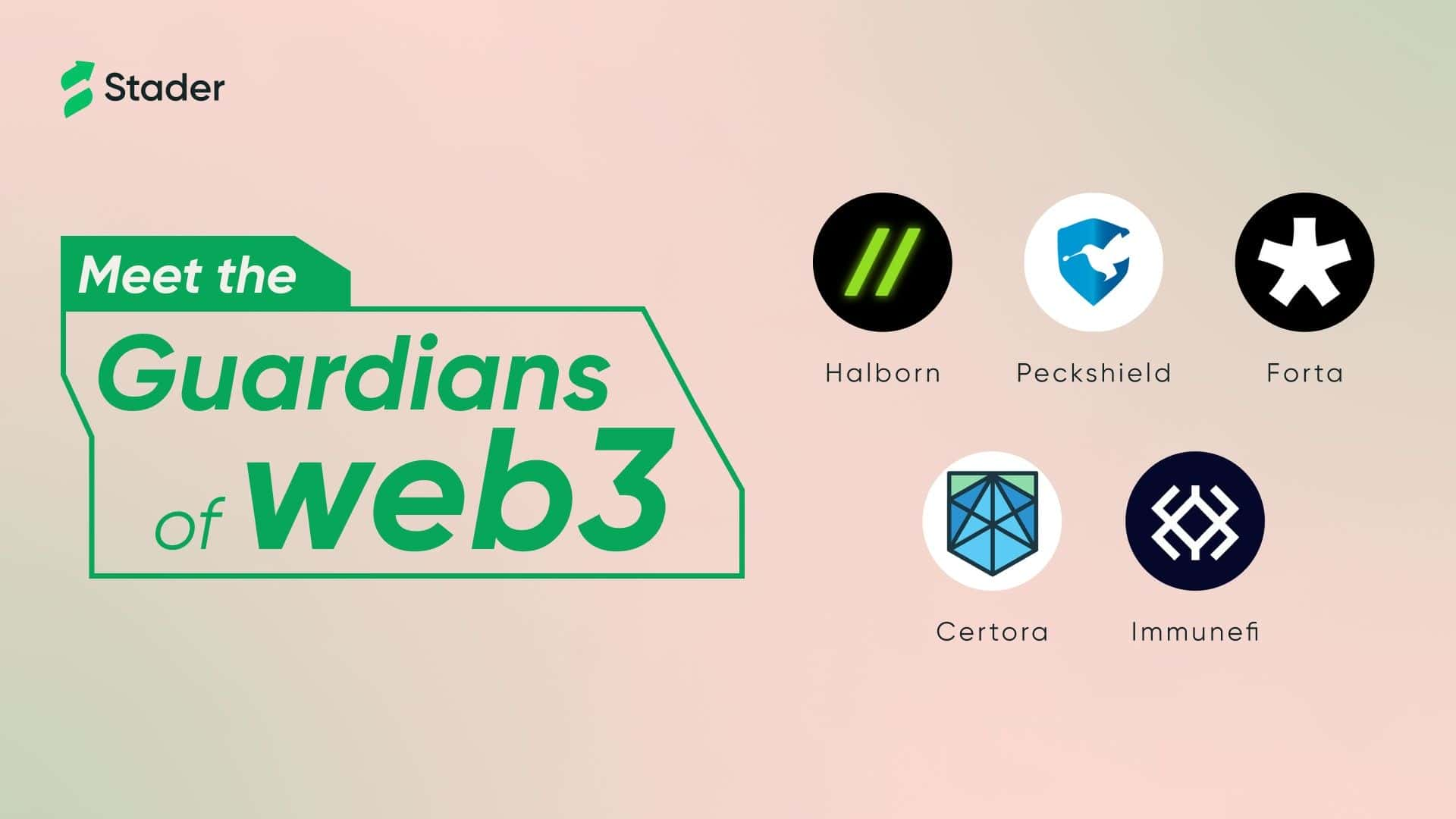Meet the Guardians of Web3
Home
Blogs
BNB
Meet the Guardi...

Meet the Guardians of Web3
In web3 security, anything that can be leveraged by a hacker to exploit the protocol should be considered a vulnerability. It could be anything, for example how a blockchain or the entire project is structured, bugs in the underlying code, or an error of bad practice due to privileged access by an individual. Blockchain’s ability to function without a human interface is the core of web3. However, in this kind of decentralized environment, even a bug in a code could increase the vulnerability of user funds in smart contracts.
In whatever form they come, vulnerabilities are unavoidable in a web3 project, but, given the enormous amount of user funds and assets handled by blockchains, the stakes of having these vulnerabilities are so high and could cause severe potential loss if overlooked.
Let’s discuss some of these vulnerabilities and what is the way out.
The Risk of Privilege
Centralisation in web3 projects by creating a single point of failure which is privileged access risk, in which hackers exploit privileged access members of the project into giving up secured information or plant a malicious program on their devices to gain access to this information. Sometimes the teams behind these projects create backdoors to drain user funds after they have raised enough investment.
The Code of Error
Logical errors in the codes of smart contracts can expose the project to n number of vulnerabilities from how the tokens are minted and traded to how the entire chain is timestamped. This leads to reentrancy attacks where a hacker is able to drain funds from a protocol by repeatedly calling a transaction function even before the protocol manages to update its balance.
The Interdependencies of Contracts
As web3 develops, smart contracts interact with data from external blockchains to perform several functions increasing the complexity of the entire project. To make this interaction seamless the projects rely on the third party to provide information about the changes in events so that the smart contacts can adapt easily. This entire process leads to the exploitation of protocol if the hacker is able to access the source information being fed to smart contracts by a third party.
The Cross Connection of Blockchains
The interoperable web3 ecosystem is under threat at every interaction. Most of the vulnerabilities of the cross-chain bridges where blockchains use protocols to communicate and share valued information with each other occur due to the difference in operating rules and organisational structure of projects.
With more and more protocols becoming interdependent and managing astronomical amounts of user funds, the web3 security industry is facing challenges in keeping up with the pace of growth. However, there are 5 companies working as guardians of web3 with full force to make this space as secure as possible.
- PeckShield - A blockchain security company founded by bold entrepreneurs and veteran threat researchers with a strong motive to revolutionize the security, privacy, and usability of large-scale systems. With the recent focus on blockchain, PeckShield researches and reports the emerging threats to smart contracts and protocols, and zero-day exploits. PeckShield provides auditing and consulting services as well to clients.
- Halborn - A cybersecurity company founded by renowned ethical hacker Steven Walbroehl and growth hacker Rob Behnke with an intent to protect blockchains from cyberattacks serves as a third party to continuously assess the valued assets of an organization, maximize automation and be present every step of the way for all your cybersecurity concerns, not limited smart contracts and protocols.
- Forta - A decentralized monitoring network of independent node operators to detect threats and anomalies on DeFi, NFT, governance, bridges and other web3 systems in real-time. These node operators scan all transactions block-by-block and report for outlier transactions and threats. If there’s an issue, node operators signal subscribers of potential risks, which enables them to take swift action.
- Certora - A leader in smart contract security, Certora leverages formal verification to verify smart contract code to the bytecode level by implementing a technology that automatically searches for suspicious behaviors in code which violates the protocol specification. It provides robust testing with its product Certora Prover and is capable of finding rare bugs which are hard to find through traditional testing methods resulting in safer codes with less likely chances of being exploited.
- Immunefi - Immunefi is one of the leading bug bounty and security analysis platforms for web3. The company provides a platform that brings hackers and projects together enabling hackers to report on vulnerabilities. This lets the projects fix themselves to avoid exploitation. Immunefi uses a dashboard to track record of the bugs reported and by whom, making a safe and viable option to identify security threats in projects, considering the bugs are identified within hours.
With security checks already in place, Stader has further strengthened its user protection by partnering with the above security giants of the industry. This not only helps us provide a better and safer user experience, but also set an industry standard.
By:
Utkarsh Verma
Join Stader’s newsletter
Get the latest updates, new DeFi strategies and exclusive offers right in your email box
Analytics
© Copyright 2023 Stader. All rights reserved.











